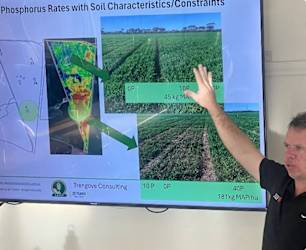THE State Government and Opposition are supporting the rezoning of productive cropping land in Roseworthy, Two Wells and Murray Bridge that could supply an equivalent of 57 million loaves of bread, or 31 loaves for every South Australian annually, independent analysis shows.
Grain Producers SA (GPSA) recently released an independent report by agricultural analyst Episode 3 (EP3), revealing the significant and irreversible cost to South Australian grain production under the State Government proposal to rezone high-quality cropping land for housing.
The State Government’s Greater Adelaide Regional Plan (GARP), supported by the Opposition, proposes lifting Environment and Food Production Area (EFPA) protections to allow housing developments across highly productive grain-growing regions, including Roseworthy and Two Wells.
GPSA chief executive officer Brad Perry said the independent analysis puts a dollar figure on the true cost of the proposed land use changes, which the State Government states is only one per cent of agricultural land in the Greater Adelaide region.
“The evidence is clear — this is not just a planning issue, it’s a food security issue,” Mr Perry said.
“This report shows that the affected areas currently produce nearly 23,000 metric tonnes of grain annually — enough to bake over 57 million loaves of bread. That’s 31 loaves for every South Australian, every year.
“In today’s terms, that land contributes over $8m in annual production value. Extrapolated over the lifespan of a regular farm, considering projected yield improvements through innovation, the loss equates to $1.6bn in future food-production value if this land is converted to housing. This is a very conservative estimate and demonstrates that rezoning productive farming land under the current proposal has a long-term impact on South Australia’s food security.
“Property developers and the associations that represent them would want nothing more than to see the urban growth boundary scrapped as they did when the EFPA was set up in 2017. The EFPA must be maintained for the protection of the future of agriculture in South Australia, as it was originally intended to do when first legislated.”
Mr Perry said the analysis failed to consider livestock production, with many cropping areas in the Adelaide Plains area being mixed-farming businesses.
Mr Perry said there would also be a significant amount of financial contribution in lost taxes to the state’s coffers that these farmers pay every year.
The EP3 analysis found that affected cropping land in Roseworthy, Two Wells and Murray Bridge is 33 per cent more productive than the state average.
“These areas are some of our most fertile and productive cropping regions. Once they’re rezoned to housing, we will lose them forever,” Mr Perry said.
The report also highlights broader risks, including impacts on farm viability through landscape fragmentation, biosecurity challenges, adverse environmental and biodiversity outcomes, and increased conflict between urban residents and primary producers.
“South Australia cannot afford to sacrifice intergenerational food-producing land at the altar of urban sprawl,” Mr Perry said.
“GPSA strongly urges the State Government and Opposition to reconsider any support for lifting EFPA protections in key grain-growing regions.
“We need a smarter approach to housing and planning policy in this state that does not come at the cost of South Australia’s food security and export capability.”
Mr Perry said grain producers in the regions impacted by the GARP proposal were already dealing with concerns about farming alongside housing estates.
“As an example, a grain producer at Roseworthy told me they had people in a housing estate complain to them because the lights of the header during harvest were shining into their bedroom window,” he said.
“The proposed changes supported by both major parties spell major challenges for the future of farming in the Adelaide Plains region.”






